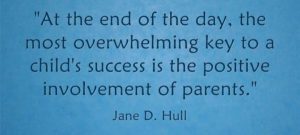“I’d love your ideas on children transitioning rooms. Things like how we support children through visits, help them to form bonds with other teachers … and support the parents too. Also possibly the difference between transitioning rooms and new children starting the centre.”
-Instagram Follower
I touched on supporting children in their transition to a new centre in my blog:
In this post I will share more depth to the process, as a robust transition for any change in routine is crucial!
Whether it’s a transition to a new centre, new room or new school… the transition process is the same.
When done responsively, listening to the individual child, it can be made smooth for all.
I have created a 7 step process to respectful transitioning.
1. Talk with the family.
Are they ready for this transition? Do they feel their child is ready for this transition?Do they have enough info about this transition? Do they know about what happens for their child in this new space? Do they know the teachers?
2. Invite the child to visit.
Has the child shown interest in exploring this new space? Have they talked about it? Invite the child to join you on a short visit. Perhaps you have an errand to run that they can join you on.
Next, invite the child to go for a play. Ask the child which teacher they would like to go with.
Continue inviting the child to visit over the next days and weeks. Having the same teacher taking the child for visits is ideal, someone the child feels most comfortable and safe with. You know the child but dont assume you know who they would prefer to visit with. Allow the child to choose.
Visiting allows the child to develop an understanding of ‘what happens here’. How it feels, the sounds, the rhythm, the routine and the expectations.
Children need to learn about the food system. Am I allowed to help myself whenever I want?
Are the doors to outside always open?
Where do I wash my hands and what is the process? What do I dry my hands with? If it is school visits, show them where the toilet is.
Visits will help the child best learn these things, so I advise you visit at different times throughout the day.
Extend these visits as the child shows they are intetested and ready.
3. Foster connection with new teachers.
Take time to introduce the child to the teacher/s and explain if they need help, it is ‘this’ person who will help you. This teacher then becomes the temporary primary caregiver for the child in this space.
Ultimately there are two of you that work cohesively together to support the transition for this child. The ‘safe person’ visiting with the child and the ‘go to’ person in the new space.
While visiting, work towards stepping back to allow the ‘go to’ teacher to work alongside, support and guide the child, at the childs pace. This will happen more and more as the child feels comfortable and builds trust. A teacher getting up in a childs space is not going to support a respectful and trusting relationship. We must respect the childs needs here and allow them time and space and allow the child to take the lead in this relationship.
4. Foster relationships with other children.
This starts with knowing the child and taking time to notice common interests and characteristics among others in this new space. Encourage the child to work alongside their peers, doing things they enjoy. Foster interaction between them in a meaningful and authentic way.
Let’s face it tho, you cannot make someone be ‘friends’ or ‘like’ someone else. Respect this. Allow the time and space for this to happen authentically. Having a culture of kindness will help this to happen as children are naturally social beings.
5. Step back and allow the child to lead.
When the child shows confidence to move away from you to play, or forms a connection with another child or teacher, work towards leaving for an hour. Allow the child to show you when they are ready. Tell the child where you are going and remind them if they need help, who to ask. (Please dont sneak away from the child). Hand over to the same teacher and let them know to call you back if the child becomes unsettled. We want the child to know they are safe and their needs will be met in this new space. When you go back, don’t just swoop in and take them back, guide them through situation that upset them.
Did they have conflict in their play? Support them so they can try again.
Did they get lost? Help them find their way.
Were they simply not comfort in this space? Spend more time.
You will know when the child is ready to spend longer periods of time in this new space, progressing full days/sessions. They will be busy, not focussed on you, joining in rituals and routines, eating and building relationships in their play.
As the child shows confidence and belonging in the new space, the ‘go to’ teacher can begin to invite the child to ‘come over to play’, leaving the ‘safe person’ in their original space.
6. Communicate with family.
At every stage through the transition process, it is important to share back with the family. Share with them how the child is going and connections they are making.
Face to face is key, but you can highlight special progress through stories and photos in their portfolio / learning assessment.
7. Check in.
Dont just disappear on the child and family that you had such a good bond with. Be sure to check in once the transition has happened in full.
Share your visit with the family and how the child seemed in their new space. This can be face to face, through photos and stories in the childs portfolio or even through text message if the child has started school.

From here, it could be worth sharing with the parents, my blog entry below, as it gives good advice for establishing consistent and effective ‘parent drop offs’ in the new setting.
A penny for your thoughts,
Nga mihi nui,
Nickie
